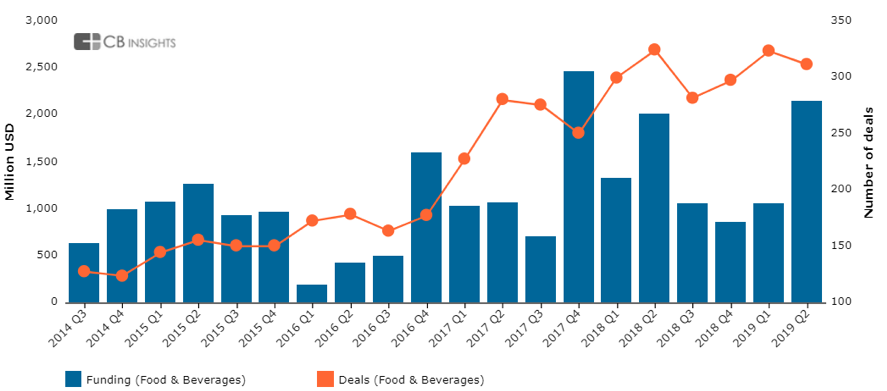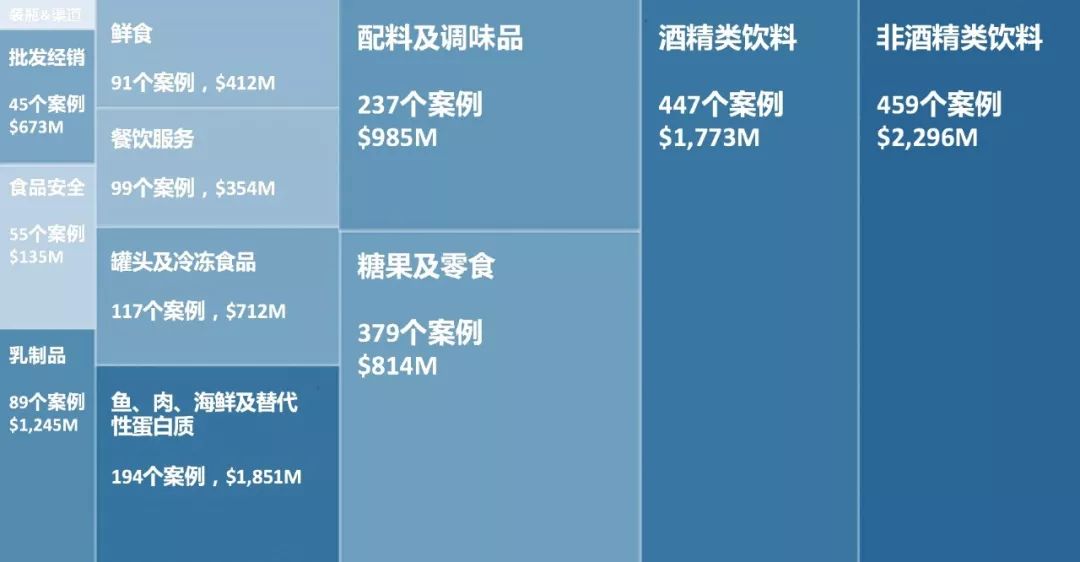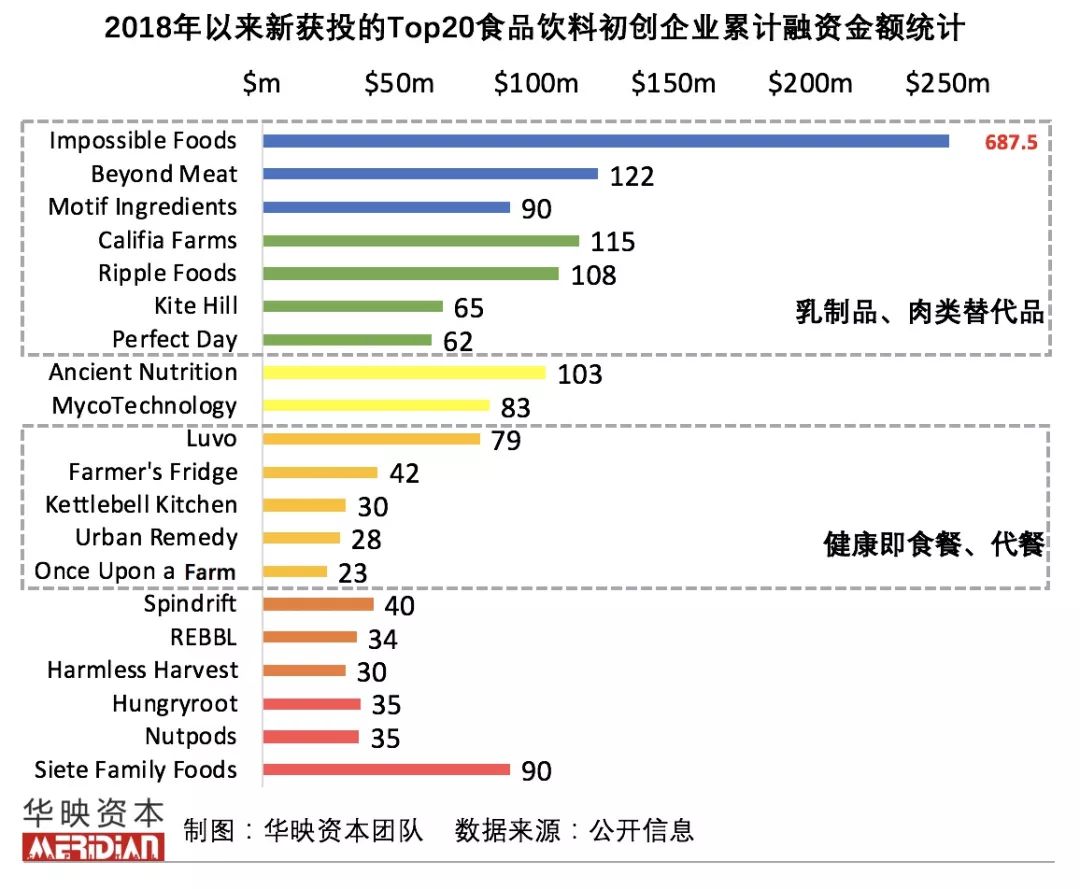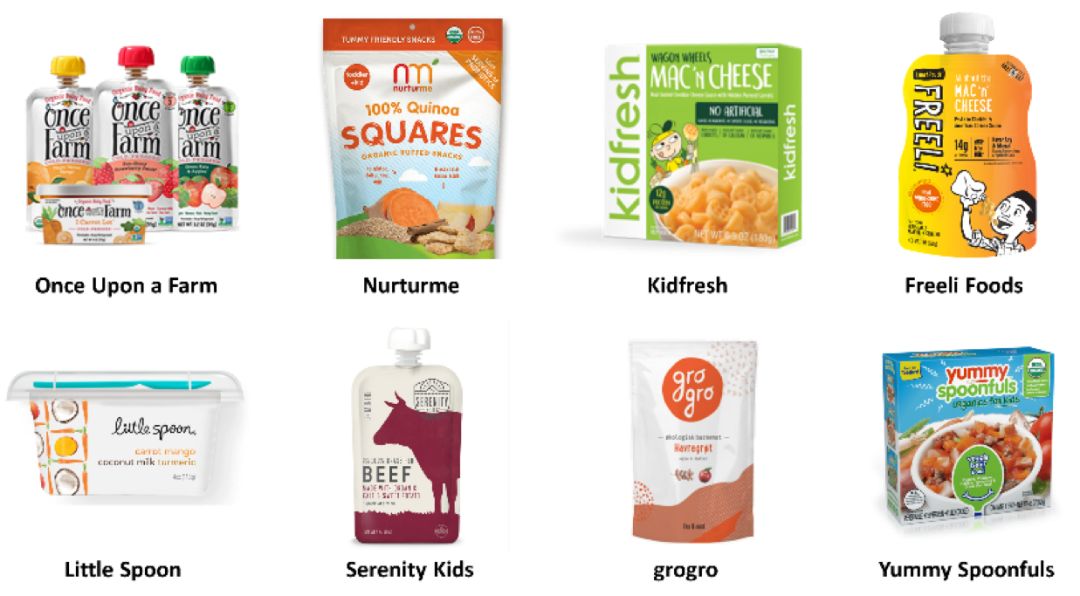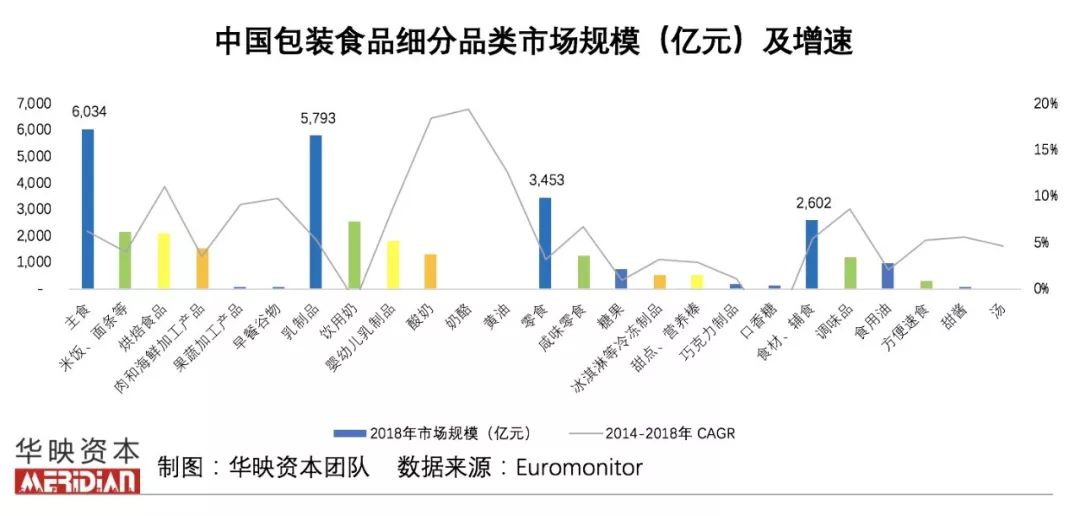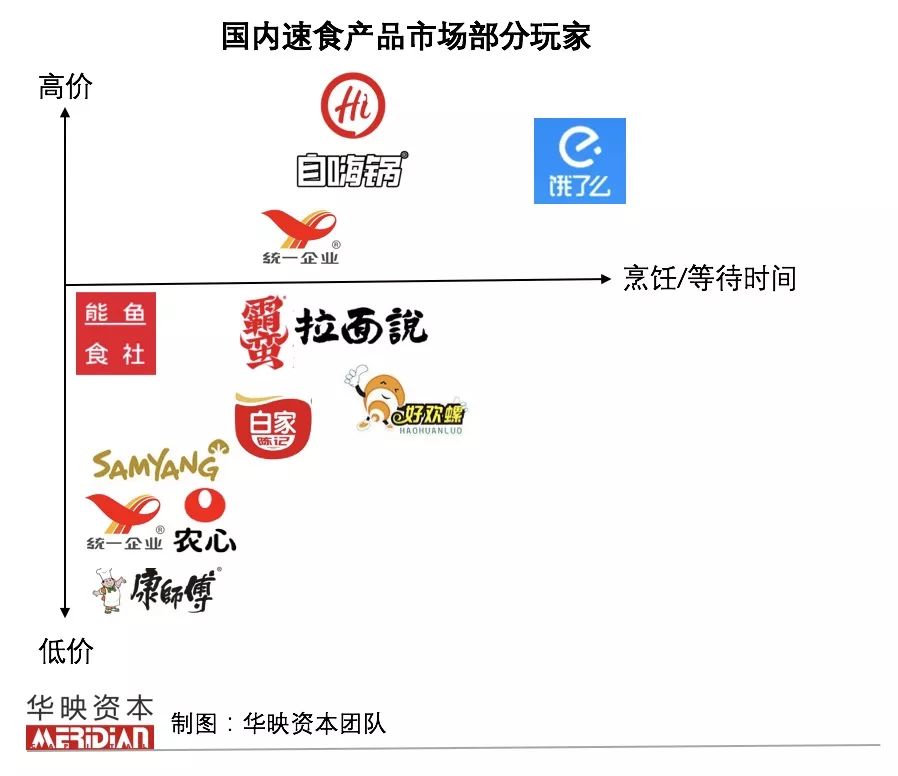After artificial meat and vegetable milk, what is the next stop opportunity for packaged food?
Editor’s note: This article is from WeChat public account “Hua Ying Capital ”(ID: MeridianCapital), author Xia Zhimeng, Jiang Zhifeng.
Packaged foods, pre-packaged or made in packaging materials and containers, mainly as opposed to fresh food.
Beyond Meat launched a battle for artificial meat. The super foods represented by Chia seeds and buckwheat are not reduced, and new concepts such as low GI and ketone meal replacement are frequent… Food innovation is extremely diversified Today, eating, drinking and drinking is becoming more and more abundant.
What is the next stop for packaged food after artificial meat and vegetable milk? After in-depth thinking and research, Huaying Capital exclusively presents this insight to explore the future development of the packaged food track.

Investment and financing insights: How big is the market for eating and drinking?
Throughout the global capital market, who is the “long-distance champion” of investment income? In addition to the pharmaceutical industry, it is the consumer staples sector. As the main force of the consumer staples industry, food companies have relatively stable demand, often have good cash flow and profitability, and have strong anti-cyclicality. It is also the reason why Buffett has long been optimistic about food and beverage stocks such as Coca-Cola.
As a mirror of industrial development changes, the investment and financing boom in the food and beverage industry has continued to grow in the past five years, especially since 2017. Overall, in the past two years, there have been 2,368 global food and beverage investment and financing events, involving an amount of about $11.7 billion, 70% of which is in the United States.
Global food and beverage industryTotal quarterly financing and financing projects (Source: CBInsights)
2017Q3-2019Q2 food and beverage industry fine Total Financing by Sector and Number of Financing Projects (Data Source: CBInsights, Huaying Capital Collation)
In terms of sub-categories, the number of food and beverage products, confectionery and snacks, ingredients and condiments has been the largest in the investment field, and the investment stage is mainly concentrated in the early seeds and angel wheels; while dairy products, fish seafood and alternatives Sexual protein is the segment that has the largest amount of financing.
The same world, the same kind of food: What are the global trends?
Consumption is expression. When healthy living becomes a “political right”, the newly established packaging food brands in recent years are inseparable from the labels of high protein, gluten free, dairy free, and low carbon water – almost all categories are facing health. Industrial upgrading.
 < /p>
< /p>
Food & Beverage Startups Atlas (Data Source: CBInsight)
After in-depth analysis of the 20 representative companies that have been newly financed since 2018 and the track they are on, we believe that technological innovation, concept innovation, and investment M&A are the three driving forces that influence the development of the food industry.
Adding the fascinating micro-signal (MeridianCapital-) to obtain data analysis of the packaged food market.
Technology innovation:Promotion Category change
Technical innovation canCreating new product categories, the current hot “artificial meat” and “plant milk” markets benefit from the development of plant protein processing technology.
Beyond Meat, the first stock of artificial meat, has been sung all the way, with a market value of tens of billions of dollars. Impossible Foods relies on technical barriers for plant hemoglobin extraction, with a total financing of nearly $700 million. China has also seen a number of artificial meat start-ups, and the first generation of products is expected to be available this year. However, the consumption habits of Chinese and Western meat products are very different. We will deeply analyze the opportunities and challenges of the Chinese artificial meat market in a series of articles in the future.
In the direction of “vegetable milk”, technical barriers are relatively low, and the path is diversified, making it easier to land. At present, the global market size is about 16 billion US dollars. The foreign vegetable milk enterprises are mainly concentrated in the United States, and they have obtained rapid capital follow-up, such as Ripple Foods, a pea milk brand with a total financing of US$115 million, and Califia Farms, a nut milk brand with a total financing of US$108 million. . However, in China, vegetable milk is not a technology-driven new track. Plant protein beverages such as coconut milk, soy milk, and walnut dew have already occupied the minds of consumers. Industry competition still exists among traditional industry giants. Incoming.
Conceptual innovation:Follow the consumer experience
The concept innovation of packaged foods is mainly reflected in changing the way products are presented, including product formula, packaging, and eating methods, thus affecting consumers’ perceptions of products and enhancing the experience. The main trends at this stage are the following three aspects:
1. Health of product materials and formulations. Consumers tend to be both delicious and healthy. Looking back at the food brands established in recent years, most companies will use clear health labels as the core of their products, emphasizing the differentiation with similar products.
Styve Biltong, which is valued at over 100 million, has a high-protein, over-million-dollar red ice cream Halo Top emphasizes low-calorie low-sugar, and has won $90 million in Mexican-style potato chips. Siete Family Foods emphasizes no Gluten is not dairy.
“health” means snacks and Condiment Brand
In addition, more and more “super food” elements appear in products such as Chia seeds, buckwheat, and chickpeas. Different from the high proteinization trend in the US snack market, Chinese consumers recognize the concept of “health”The stage of knowledge is different from that of the United States, and the market is still being cultivated.
2, product form is portable. Meal replacement foods are typical. They use scientific ingredients to make powders, RTD milkshakes and beverages, energy bars, etc., which change the traditional food form, such as Soylent, a surrogate beverage brand with a valuation of more than 1 billion US dollars. Huel, a replacement meal brand with annual sales of over 40 million pounds.
The Chinese meal replacement market has just started. At this stage, it is mainly for consumers with strong weight management appeal, and the audience is relatively limited. With the entry of more companies, the future can grow into a market for mass consumer groups.
 < /p>
< /p>
Representative company on behalf of the meal replacement
3, traditional meals are convenient for fast food.. Many startups are beginning to offer convenient and fast food at room temperature or frozen. For example, Luvo, which has raised a total of $79 million, provides heated, ready-to-eat frozen products. Farmer’s Fridge, which has raised $42 million in financing, provides health foods such as salads to travelers through remodeling vending machines. The $30 million Kettlebell Kitchen is available to provide fitness for the fitness population. Healthy subscription meal service.
In China, the diversity of traditional cuisine has brought huge incremental opportunities for fast food products, which will be detailed in the third section.
Convenient fast food track representative Company
It is worth mentioning that the American children’s fast food brand has been favored by capital in the past year. For example, Once Upon a Farm, which provides a fruit and vegetable hybrid product subscription service, has raised a total of $23 million, targeting Kidfresh and Freeli Foods, which specializes in offline channels, and custom-made food brand Little Spoon. In China, some large food companies have product lines covering children’s food, and independent children’s fast food brands have not yet appeared.
Representative company for children’s fast food meal
Investing in M&A:Accelerating the Boost Industry
Compared with internal R&D innovation, food giants have increased their scale through a large number of investment mergers and acquisitions. Healthy and organic innovative foods are hot targets in recent years.
Universal Mills has invested in a number of alternative protein and health zero food brands, including Beyond Meat, Kite Hill, a $55 million almond milk brand, and Urban Remedy, a 58 million meal replacement box. Rhythm Superfoods and more.
And Nestlé, the “overbearing president” who bought 250 companies in 20 years, went further and further on the road of buying and selling. In 17 years, it acquired succulent food manufacturer Sweet Earth and spent $2.3 billion to acquire natural dietary supplement company. Atrium Innovation; 18 years of selling its own candy business in the United States to Ferrero, the same year the acquisition of Latin American “super food” Goldenberry company Terrafertil.
The incubator brands of Pepsi, Kraft Heinz and CHOBANI are all based on organic, high-protein, healthy and other elements.
Snacks of cereals, functional yoghurts, snack bars… Where are the investment opportunities in China?
Let us pull our eyes back to the Chinese market. In 2018, China’s packaged food market totaled 1.789 billion yuan, the second largest market in the world after the United States (2,273.9 billion yuan). Since 2015, the market has accelerated its expansion, with a year-on-year growth of 6.8% in 2018, outperforming the per capita GDP growth rate in the same period.
The new brand copy in the trillion-dollar Red Sea market The existing product routes are difficult to get through, and cutting into the market gap to create incremental markets is a more effective path. From the perspective of food consumer goods entrepreneurship, around the rejuvenation of consumer groups and the quality of consumer demand, we are optimistic about the opportunities in the following directions.
Technology drives the yogurt market to grow at a high rate-Functional yogurt can be in the future
In recent years, the consumption of yogurt in China is actually very stable, but the price of high-endThe grid upgrade drive market is developing rapidly. The market scale has expanded from 54.2 billion yuan in 2013 to 133.9 billion yuan in 2018. The compound annual growth rate is as high as 20%, and the scale has exceeded milk.
The main increase is due to the normal temperature that gets rid of the cold chain Yogurt. As the permeability of yogurt at room temperature is gradually saturated, functional yogurt with the concept of “high protein”, “meal replacement” and “live bacteria” or the opportunity to upgrade the next yogurt.
In contrast to the United States, Greek yogurt began to be popular in the United States in 2007. At that time, the US yogurt market accounted for less than 1%, and by 2015 the market share had exceeded 50%. The head company Chobani developed into the best-selling yogurt brand, with annual revenue of nearly 2 billion US dollars. It has reached $5 billion.
The scale of China’s yogurt market has broken through 100 billion yuan. The penetration rate of high-protein yogurt is far from enough. Although new yogurt brands such as Jane Eyre, Kasper and Lechun have appeared, they have not exceeded 1 billion yuan in revenue. Ceiling. In the future, as consumers’ awareness of health concepts escalates, the demand for functional yogurt will increase.
New category appears – the snack bar market gap has to be filled
The US snack bar market reached 48.11 billion yuan in 2018, accounting for nearly 42% of the global market. The average annual growth rate of nut sticks and energy bars in the past five years exceeded 10 %. Most of the head brands have giant figures behind them, including General Mill’s Grain Bar Nature Valley, Integrated Snack Bar Clif Bar, Mars’s Nut Rod Healthy Snacks, and Kellogg’s Protein Bar RXBAR. NFC juice brand Naked also launched a nut stick, while Clio is the main push for Greek yogurt low-temperature snacks.
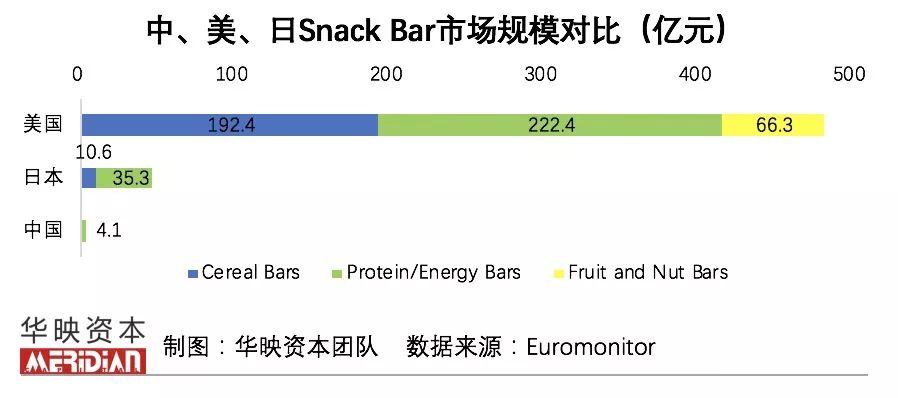
There are only 400 million protein bars in the Chinese market, such as the ketone energy bar for the beast life, the Xfire to the energy bar, the original kitchen energy bar, etc. There is no grain bar or nut bar product, and there is a huge increase. Volume space. We look forward to more startups, and we can continue to launch a snack bar brand that meets the tastes of Chinese people and faces the mass market.
The lazy economy brings the “fast food era”—Quality upgrades for fast food products
The lazy economy is a global trend. Even in the United States, Japan and South Korea where the overall demand for food is stable, the growth rate of the fast food market is significantly higher than other food categories. In 2018, CJ’s fast-food food brand partner sold 400 million copies in South Korea, and consumed 8 instant meals per person.
In China, the diversity of traditional cuisine provides a deep foundation for the development of instant food. In just a few years, fast food products have been rapidly expanded from traditional instant noodles, rice pudding, ham and so on to self-heating rice and small hot pot. Local instant noodles such as instant food/soup and snail powder.
According to consumer prices, waiting times, tastes, The different needs of the food scene, the fast food market can be divided into different dimensions. Traditional instant noodles, ramen noodles, Baijia Chenji, Baman, etc., provide semi-finished packaged foods, consumers still need cooking, mainly for family dining scenes; self-heating pots, uniform open small stoves, self-heating rice, sea fishing, small heat Hot pot, dishes can be self-heating, the most common dining scene, but the cost is relatively high, heating waiting time is long; bear fish food restaurant and other fast-food dishes and instant rice, the product can be eaten by heating in the microwave, in the taste, scene, cost, etc. Relatively balanced in all aspects.
To benchmark the US market, we look forward to seeing more fast-food products for vertical demand/population, such as pre-made short-term health foods for fitness/nutrition needs, complementary foods for babies and fast food for children Products, etc.
Last
With the continuous transformation of technology and concept on both ends of supply and demand, food as a just-needed track will continue to grow steadily in the future, with high ceilings and strong imagination.
Hua Ying continues to focus on delicious, convenient and healthy foods, such as upgraded Ready to Eat food, new base snacks and other sub-segments.In the future, “Hua Ying Insight” will continue to present in-depth research on the beverage track and artificial meat market, and welcome entrepreneurs and investors to communicate with us.
